-
TPS6256x 2.25-MHz, 600-mA Step-Down Converter in TSOT and 2 × 2 × 0.8-mm QFN Package
- 1 Features
- 2 Applications
- 3 Description
- 4 Revision History
- 5 Device Comparison Table
- 6 Pin Configuration and Functions
- 7 Specifications
- 8 Detailed Description
- 9 Application and Implementation
- 10Power Supply Recommendations
- 11Layout
- 12Device and Documentation Support
- 13Mechanical, Packaging, and Orderable Information
- IMPORTANT NOTICE
Package Options
Mechanical Data (Package|Pins)
- DDC|5
Thermal pad, mechanical data (Package|Pins)
Orderable Information
TPS6256x 2.25-MHz, 600-mA Step-Down Converter in TSOT and 2 × 2 × 0.8-mm QFN Package
1 Features
- Output Current up to 600 mA
- Input Voltage Range from 2.5 V to 5.5 V
- Output Voltage Accuracy in PWM Mode ±2.5%
- Typical 15-μA Quiescent Current
- 100% Duty Cycle for Lowest Dropout
- Soft Start
- Available in a Small SOT, and
2 mm × 2 mm × 0.8 mm SON Package - For Improved Features Set, See the TPS62290 device (SLVS764)
2 Applications
- PDAs, Pocket PCs, Portable Media Players
- Low-Power DSP Supply
- Point-of-Load (POL) Applications
3 Description
The TPS62560 device is a high efficiency synchronous step down converter, optimized for battery powered portable applications. It provides up to 600-mA output current from batteries, such as single Li-Ion or other common chemistry AA and AAA cells.
With an input voltage range of 2.5 V to 5.5 V, the device is targeted to power a large variety of portable handheld equipment or POL applications.
The TPS62560 family operates at 2.25-MHz fixed switching frequency and enters a Power Save Mode operation at light load currents to maintain a high efficiency over the entire load current range.
The Power Save Mode is optimized for low output voltage ripple. For low noise applications, the device can be forced into fixed frequency PWM mode by pulling the MODE pin high. In the shutdown mode the current consumption is reduced to less than 1 µA. The TPS62560 allows the use of small inductors and capacitors to achieve a small solution size.
TPS62560 and TPS62562 are available in a 2-mm × 2-mm, 6-pin SON package, whereas the TPS62561 is available in a 5-pin SOT package.
Device Information(1)
| PART NUMBER | PACKAGE | BODY SIZE (NOM) |
|---|---|---|
| TPS62560, TPS62562 | SON (6) | 2.00 mm × 2.00 mm |
| TPS62561 | SOT (5) | 2.90 mm × 1.60 mm |
- For all available packages, see the orderable addendum at the end of the data sheet.
Typical Application Schematic
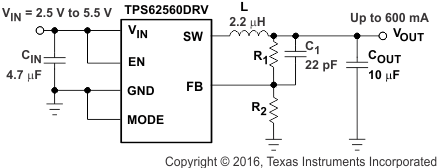
Efficiency vs Output Current
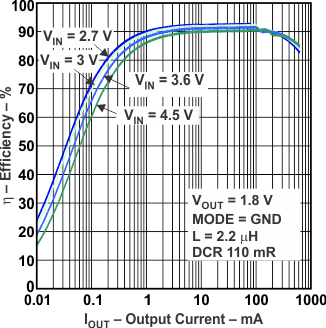
4 Revision History
Changes from C Revision (December 2009) to D Revision
- Added ESD Ratings table, Feature Description section, Device Functional Modes, Application and Implementation section, Power Supply Recommendations section, Layout section, Device and Documentation Support section, and Mechanical, Packaging, and Orderable Information section.Go
- Removed Ordering Information table Go
- Changed text string From ".....up to 1000-mA output current.." To ".....up to 600-mA output current.." in Description.Go
- Corrected typographical errors in Figure 32; from "VIN= 2 V to 6 V" to "VIN = 2.5 V to 5.5 V"Go
Changes from B Revision (March 2009) to C Revision
- Deleted High Efficiency Step Down ConverterGo
- Deleted "Wide" from Features bulletGo
- Deleted "for Li-Ion Batteries With Extended Voltage Range" from Features Go
- Deleted "Adjustable and Fixed Output-Voltage Options" from FeaturesGo
- Deleted "2.25 MHz Fixed Frequency Operation" from FeaturesGo
- Deleted "Power Save Mode at Light Load Currents" from Features Go
- Deleted "Voltage Positioning at Light Loads" from FeaturesGo
- Deleted "Allows < 1-mm Solution Height" from FeaturesGo
- Changed Description to better reflect device capabilities and differences to TPS62260Go
Changes from A Revision (July 2008) to B Revision
- Added TPS62562 device number.Go
Changes from * Revision (January 2008) to A Revision
- Changed at all levels. Revision A is a complete rewrite of this data sheet.Go
5 Device Comparison Table
| Part Number | Package | Mode Pin | Output Voltage(1) | Device Marking(2) |
|---|---|---|---|---|
| TPS62560 | SON (6) | yes | Adjustable | CEY |
| TPS62561 | SOT (5) | forced PWM only | Adjustable | CVO |
| TPS62562 | SON (6) | yes | 1.8 V fixed | NXT |
6 Pin Configuration and Functions
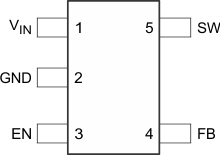
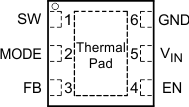
Pin Functions
| PIN | I/O | DESCRIPTION | ||
|---|---|---|---|---|
| NAME | No. QFN-6 |
No. TSOT23-5 |
||
| EN | 4 | 3 | I | This is the enable pin of the device. Pulling this pin to low forces the device into shutdown mode. Pulling this pin to high enables the device. This pin must be terminated. |
| FB | 3 | 4 | I | Feedback pin for the internal regulation loop. Connect the external resistor divider to this pin. In the fixed-output-voltage option, connect this terminal directly to the output capacitor. |
| GND | 6 | 2 | — | GND supply pin |
| MODE | 2 | N/A | I | This pin is only available as a QFN package option. MODE pin = high forces the device to operate in the fixed-frequency PWM mode. MODE pin = low enables the power-save mode with automatic transition from PFM mode to fixed-frequency PWM mode. |
| SW | 1 | 5 | O | This is the switch pin and is connected to the internal MOSFET switches. Connect the external inductor between this pin and the output capacitor. |
| VIN | 5 | 1 | — | VIN power-supply pin |
| Exposed Thermal Pad | — | N/A | — | Must be soldered to achieve appropriate power dissipation. Should be connected to GND. |
7 Specifications
7.1 Absolute Maximum Ratings
over operating free-air temperature range (unless otherwise noted)(1)| MIN | MAX | UNIT | |||
|---|---|---|---|---|---|
| Input voltage range(2) | –0.3 | 7 | V | ||
| Voltage range at EN, MODE | –0.3 | VIN +0.3, ≤ 7 | |||
| Voltage on SW | –0.3 | 7 | |||
| Peak output current | Internally limited | A | |||
| TJ | Maximum operating junction temperature | –40 | 125 | °C | |
| Tstg | Storage temperature | –65 | 150 | °C | |
7.2 ESD Ratings
| VALUE | UNIT | |||
|---|---|---|---|---|
| V(ESD) | Electrostatic discharge(3) | Human-body model (HBM), per ANSI/ESDA/JEDEC JS-001(1) | ±2000 | V |
| Charged-device model (CDM), per JEDEC specification JESD22-C101(2) | ±1000 | |||
| Machine model | ±200 | |||
7.3 Recommended Operating Conditions
| MIN | MAX | UNIT | ||
|---|---|---|---|---|
| VIN | Supply voltage | 2.5 | 5.5 | V |
| VOUT | Output voltage range for adjustable voltage | 0.85 | VIN | V |
| TA | Operating ambient temperature | –40 | 85 | °C |
| TJ | Operating junction temperature | –40 | 125 | °C |
7.4 Thermal Information
| THERMAL METRIC(1) | TPS62560, TPS62562 | TPS62561 | UNIT | |
|---|---|---|---|---|
| DRV (SON) | DDC (SOT) | |||
| 6 PINS | 5 PINS | |||
| RθJA | Junction-to-ambient thermal resistance | 67.8 | 226.9 | °C/W |
| RθJC(top) | Junction-to-case (top) thermal resistance | 88.5 | 40.7 | °C/W |
| RθJB | Junction-to-board thermal resistance | 37.2 | 48.8 | °C/W |
| ψJT | Junction-to-top characterization parameter | 2.0 | 0.5 | °C/W |
| ψJB | Junction-to-board characterization parameter | 37.6 | 48.1 | °C/W |
| RθJC(bot) | Junction-to-case (bottom) thermal resistance | 7.9 | n/a | °C/W |
7.5 Electrical Characteristics
Over full operating ambient temperature range, typical values are at TA = 25°C. Unless otherwise noted, specifications apply for condition VIN = EN = 3.6 V. External components CIN = 4.7 μF 0603, COUT = 10 μF 0603, L = 2.2 μH| PARAMETER | TEST CONDITIONS | MIN | TYP | MAX | UNIT | |
|---|---|---|---|---|---|---|
| SUPPLY | ||||||
| VIN | Input voltage range | 2.5 | 5.5 | V | ||
| IOUT | Output current | VIN 2.5 V to 5.5 V | 600 | mA | ||
| IQ | Operating quiescent current | IOUT = 0 mA, PFM mode enabled (MODE = GND), device not switching |
15 | μA | ||
| IOUT = 0 mA, PFM mode enabled (MODE = GND), device switching, VOUT = 1.8 V, See (1) |
18.5 | |||||
| IOUT = 0 mA, switching with no load (MODE = VIN), PWM operation, VOUT = 1.8 V, VIN = 3 V |
3.8 | mA | ||||
| ISD | Shutdown current | EN = GND | 0.5 | μA | ||
| UVLO | Undervoltage lockout threshold | Falling | 1.85 | V | ||
| Rising | 1.95 | |||||
| ENABLE, MODE | ||||||
| VIH | High-level input voltage, EN, MODE | 2 V ≤ VIN ≤ 5.5 V | 1 | VIN | V | |
| VIL | Low-level input voltage, EN, MODE | 2 V ≤ VIN ≤ 5.5 V | 0 | 0.4 | V | |
| IIN | Input bias current, EN, MODE | EN, MODE = GND or VIN | 0.01 | 1 | μA | |
| POWER SWITCH | ||||||
| RDS(on) | High side MOSFET on-resistance | VIN = VGS = 3.6 V, TA = 25°C | 252 | 492 | mΩ | |
| Low side MOSFET on-resistance | 194 | 391 | ||||
| ILIMF | Forward current limit, high and low side MOSFET | VIN = VGS = 3.6 V | 0.8 | 1 | 1.2 | A |
| TSD | Thermal shutdown | Increasing junction temperature | 140 | °C | ||
| Thermal-shutdown hysteresis | Decreasing junction temperature | 20 | ||||
| OSCILLATOR | ||||||
| fSW | Oscillator frequency | 2 V ≤ VIN ≤ 5.5 V | 2.25 | MHz | ||
| OUTPUT | ||||||
| VOUT | Adjustable-output voltage range | 0.85 | VIN | V | ||
| VOUT | TPS62562 fixed output voltage | VIN ≥ 1.8 V | 1.8 | V | ||
| Vref | Reference voltage | 600 | mV | |||
| VFB | Feedback voltage, PWM mode | MODE = VIN, PWM operation, for fixed-output-voltage versions VFB = VOUT, 2.5 V ≤ VIN ≤ 5.5 V, 0 mA ≤ IOUT ≤ 600 mA (3) |
–2.5% | 0% | 2.5% | |
| Feedback voltage, PFM mode | MODE = GND, device in PFM mode, voltage positioning active(1) | 1% | ||||
| Load regulation | PWM mode | –1 | %/A | |||
| tStart Up | Start-up time | Time from active EN to reach 95% of VOUT nominal | 500 | μs | ||
| tRamp | VOUT ramp-up time | Time to ramp from 5% to 95% of VOUT | 250 | μs | ||
| Ilkg | Leakage current into SW terminal | VIN = 3.6 V, VIN = VOUT = VSW, EN = GND (2) | 0.5 | 1 | μA | |
7.6 Typical Characteristics
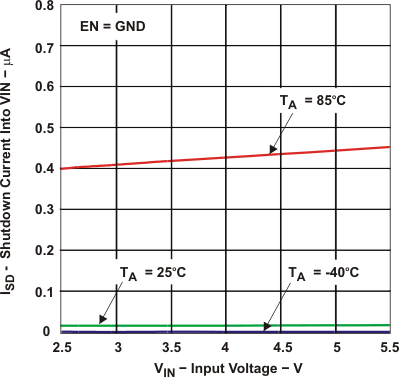 Figure 1. Shutdown Current into VIN vs Input Voltage
Figure 1. Shutdown Current into VIN vs Input Voltage
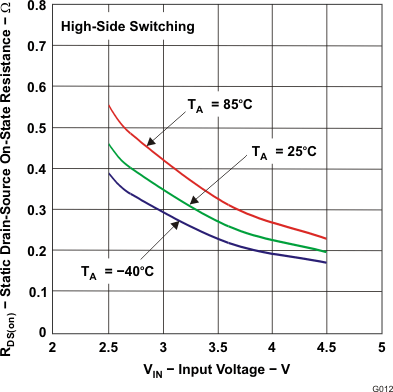 Figure 3. Static Drain-Source ON-State Resistance
Figure 3. Static Drain-Source ON-State Resistance
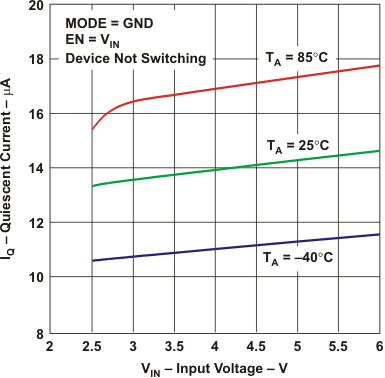 Figure 2. Quiescent Current vs Input Voltage
Figure 2. Quiescent Current vs Input Voltage
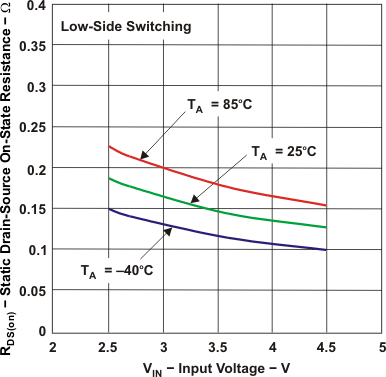 Figure 4. Static Drain-Source ON-State Resistance vs Input Voltage
Figure 4. Static Drain-Source ON-State Resistance vs Input Voltage
8 Detailed Description
8.1 Overview
The TPS62560/62 step-down converters operate with typically 2.25-MHz fixed-frequency pulse-width modulation (PWM) at moderate to heavy load currents. At light load currents, the converter can automatically enter power-save mode, and then operates in PFM mode. However, the TPS62561 operates with fixed-frequency PWM only, also at light load conditions.
During PWM operation, the converter uses a unique fast-response voltage-mode control scheme with input-voltage feed-forward to achieve good line and load regulation, allowing the use of small ceramic input and output capacitors. At the beginning of each clock cycle initiated by the clock signal, the high-side MOSFET switch is turned on. The current flows from the input capacitor via the high-side MOSFET switch through the inductor to the output capacitor and load. During this phase, the current ramps up until the PWM comparator trips and the control logic turns off the switch. The current-limit comparator also turns off the switch in case the current limit of the high-side MOSFET switch is exceeded. After a dead time, which prevents shoot-through current, the low-side MOSFET rectifier is turned on and the inductor current ramps down. The current flows from the inductor to the output capacitor and to the load. It returns back to the inductor through the low-side MOSFET rectifier.
The next cycle is initiated by the clock signal again turning off the low-side MOSFET rectifier and turning on the on the high-side MOSFET switch.
8.2 Functional Block Diagram
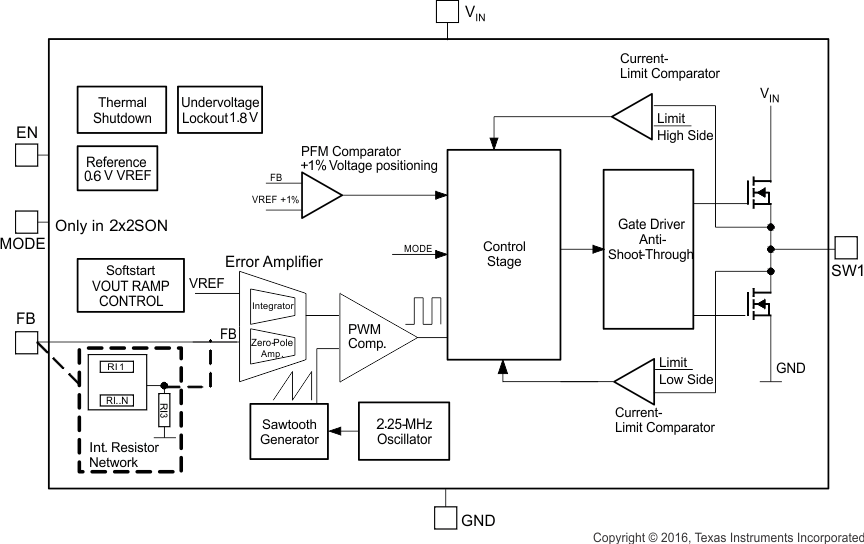
8.3 Feature Description
8.3.1 Dynamic Voltage Positioning
This feature reduces the voltage under/overshoots at load steps from light to heavy load and vice versa. It is active in power-save mode and regulates the output voltage 1% higher than the nominal value. This provides more headroom for both the voltage drop at a load step, and the voltage increase at a load throw-off.
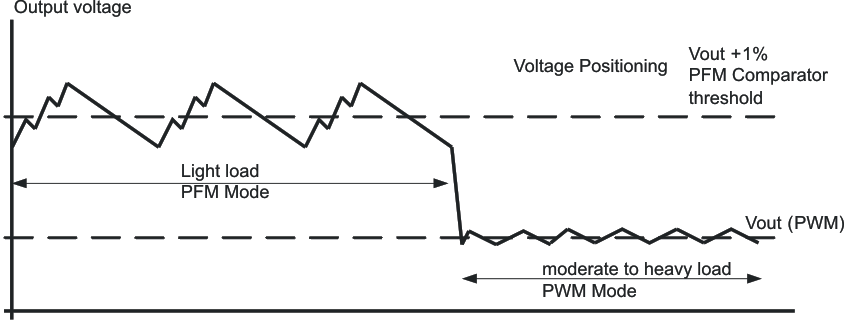 Figure 5. Power Save Mode Operation With Automatic Mode Transition
Figure 5. Power Save Mode Operation With Automatic Mode Transition
8.3.2 Undervoltage Lockout
The undervoltage lockout circuit prevents the device from malfunctioning at low input voltages and from excessive discharge of the battery and disables the output stage of the converter. The undervoltage lockout threshold is typically 1.85 V with falling VIN.
8.3.3 Mode Selection
The MODE terminal allows mode selection between forced-PWM mode and power-save mode.
Connecting this terminal to GND enables the power-save mode with automatic transition between PWM and PFM modes. Pulling the MODE terminal high forces the converter to operate in fixed-frequency PWM mode even at light load currents. This allows simple filtering of the switching frequency for noise-sensitive applications. In this mode, the efficiency is lower compared to the power-save mode during light loads.
The state of the MODE terminal can be changed during operation to allow efficient power management by adjusting the operation mode of the converter to the specific system requirements.
8.3.4 Enable
The device is enabled by setting the EN terminal to high. During the start-up time tStart Up, the internal circuits are settled and the soft-start circuit is activated. The EN input can be used to control power sequencing in a system with various dc/dc converters. The EN terminal can be connected to the output of another converter, to drive the EN terminal high to achieve a sequencing of the given supply rails. With EN = GND, the device enters shutdown mode, in which all internal circuits are disabled. In fixed-output-voltage versions, the internal resistor divider network is then disconnected from the FB terminal.
8.3.5 Thermal Shutdown
As soon as the junction temperature, TJ, exceeds 140°C (typical), the device goes into thermal shutdown. In this mode, the high-side and low-side MOSFETs are turned off. The device continues its operation when the junction temperature falls below the thermal shutdown hysteresis.
8.4 Device Functional Modes
8.4.1 Soft-Start
The TPS62560 has an internal soft-start circuit that controls the ramp-up of the output voltage. The output voltage ramps up from 5% to 95% of its nominal value typically within 250 μs. This limits the inrush current into the converter during ramp-up and prevents possible input voltage drops when a battery or high-impedance power source is used. The soft-start circuit is enabled within the start-up time tStart Up.
8.4.2 Power-Save Mode
The power-save mode is enabled with the MODE terminal set to the low level. If the load current decreases, the converter enters the power-save mode of operation automatically. During power-save mode, the converter skips switching and operates with reduced frequency in PFM mode with a minimum quiescent current to maintain high efficiency. The converter positions the output voltage typically 1% above the nominal output voltage. This voltage positioning feature minimizes voltage drops caused by a sudden load step.
The transition from PWM mode to PFM mode occurs once the inductor current in the low-side MOSFET switch becomes zero, which indicates discontinuous conduction mode.
During the power-save mode, the output voltage is monitored with a PFM comparator. As the output voltage falls below the PFM comparator threshold of VOUT nominal + 1%, the device starts a PFM current pulse. The high-side MOSFET switch turns on, and the inductor current ramps up. After the on-time expires, the switch is turned off and the low-side MOSFET switch is turned on until the inductor current becomes zero.
The converter effectively delivers a current to the output capacitor and the load. If the load is below the delivered current, the output voltage rises. If the output voltage is equal to or higher than the PFM comparator threshold, the device stops switching and enters a sleep mode with typical 15-μA current consumption.
If the output voltage is still below the PFM comparator threshold, a sequence of further PFM current pulses is generated until the PFM comparator threshold is reached. The converter starts switching again once the output voltage drops below the PFM comparator threshold.
With a fast single-threshold comparator, the output-voltage ripple during PFM-mode operation can be kept small. The PFM pulse is time controlled, which allows modifying the charge transferred to the output capacitor by the value of the inductor. The resulting PFM output-voltage ripple and PFM frequency depend primarily on the size of the output capacitor and the inductor value. Increasing output capacitor values and inductor values minimizes the output ripple. The PFM frequency decreases with smaller inductor values and increases with larger values.
The PFM mode is left and PWM mode entered in case the output current can no longer be supported in PFM mode. The power-save mode can be disabled by setting the MODE terminal to high. The converter then operates in the fixed-frequency PWM mode.
8.4.2.1 100% Duty-Cycle Low-Dropout Operation
The device starts to enter 100% duty-cycle mode once the input voltage comes close to the nominal output voltage. In order to maintain the output voltage, the high-side MOSFET switch is turned on 100% for one or more cycles.
With further decreasing VIN, the high-side MOSFET switch is turned on completely. In this case, the converter offers a low input-to-output voltage difference. This is particularly useful in battery-powered applications to achieve longest operation time by taking full advantage of the whole battery-voltage range.
The minimum input voltage to maintain regulation depends on the load current and output voltage; and, can be calculated as:
sp

where
- IOUTmax = maximum output current plus inductor ripple current
- RDS(on)max = maximum P-channel switch RDS(on)
- RL = dc resistance of the inductor
- VOUTmax = nominal output voltage plus maximum output voltage tolerance
8.4.2.2 Short-Circuit Protection
The high-side and low-side MOSFET switches are short-circuit protected with maximum switch current = ILIMF. The current in the switches is monitored by current-limit comparators. Once the current in the high-side MOSFET switch exceeds the threshold of its current-limit comparator, it turns off and the low-side MOSFET switch is activated to ramp down the current in the inductor and high-side MOSFET switch. The high-side MOSFET switch can only turn on again after the current in the low-side MOSFET switch has decreased below the threshold of its current-limit comparator.